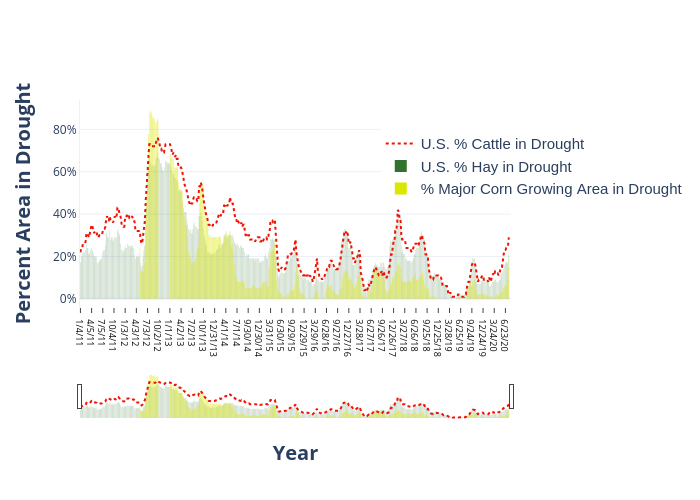Livestock Wx
By the N#mbers
By the N#mbers for the Week of April 22, 2019: May-June-July Seasonal Outlooks
-
33%-40% Chance of Below Normal Temperatures
On Thursday, April 18, NOAA released its Seasonal Temperature and Precipitation Outlooks. The Outlooks cover May-June-July, or as is said in the biz, “MJJ”. Temperatures are expected to be cooler than normal over the Southern Plains, whereas the rest of the nation is expected to be warmer than normal. The Outlooks are keying on climatological patterns observed during El Niño years, which is partly why they are showing below normal temps from Nebraska down to Texas.

-
40%-50% Chance of Above Normal Rainfall
Just like the Outlook for Temperature, expectations for precipitation are mostly aligned with what we normally expect during an El Niño. Over the next three-months lookout for above-normal rainfall over most of the country. The enhanced outlooks for rainfall are also associated with current positive (wet) soil moisture anomalies over the Plains. It will be interesting if the percentage of drought continues to decline across the U.S. As many know, the summer is usually when it ramps up so it should be an interesting next three-months.

-
3% Decline in March Cattle Marketings
The April Cattle on Feed report shows 1.78 million head of cattle were marketed in March, a 3% decline of marketings compared to 2018 numbers. It’s easy to see how the colder than normal temperatures combined with above average precipitation in major cattle feeding locations could’ve have put a damper on March marketing numbers.
-
Top 100
Looking at the most recent climate rankings, many regions around Texas were inside the top 100 years (Remember these rankings consider the last 125 years) for precipitation for the period of October through March. The TX High Plains (includes the Panhandle) was the 104th wettest, the Low Rolling Plains 113th, North Central was 119th, the Trans Pecos was 100th, and the Edwards Plateau was 113th. That explains how we were looking dry way back in December-January in the Panhandle and surrounding areas and then all of a sudden, the drought was gone, and South Texas took it over.
-
3% Drought and on the Decline?
The U.S. drought area continues to take a pounding. This week, just like last week, set a record for the lowest percentage of the Contiguous U.S. in drought at just a little over 3%. We’re rooting for something south of 1% but we’re also mindful many areas don’t need any more precipitation and are looking forward to planting and turning out their cattle.


